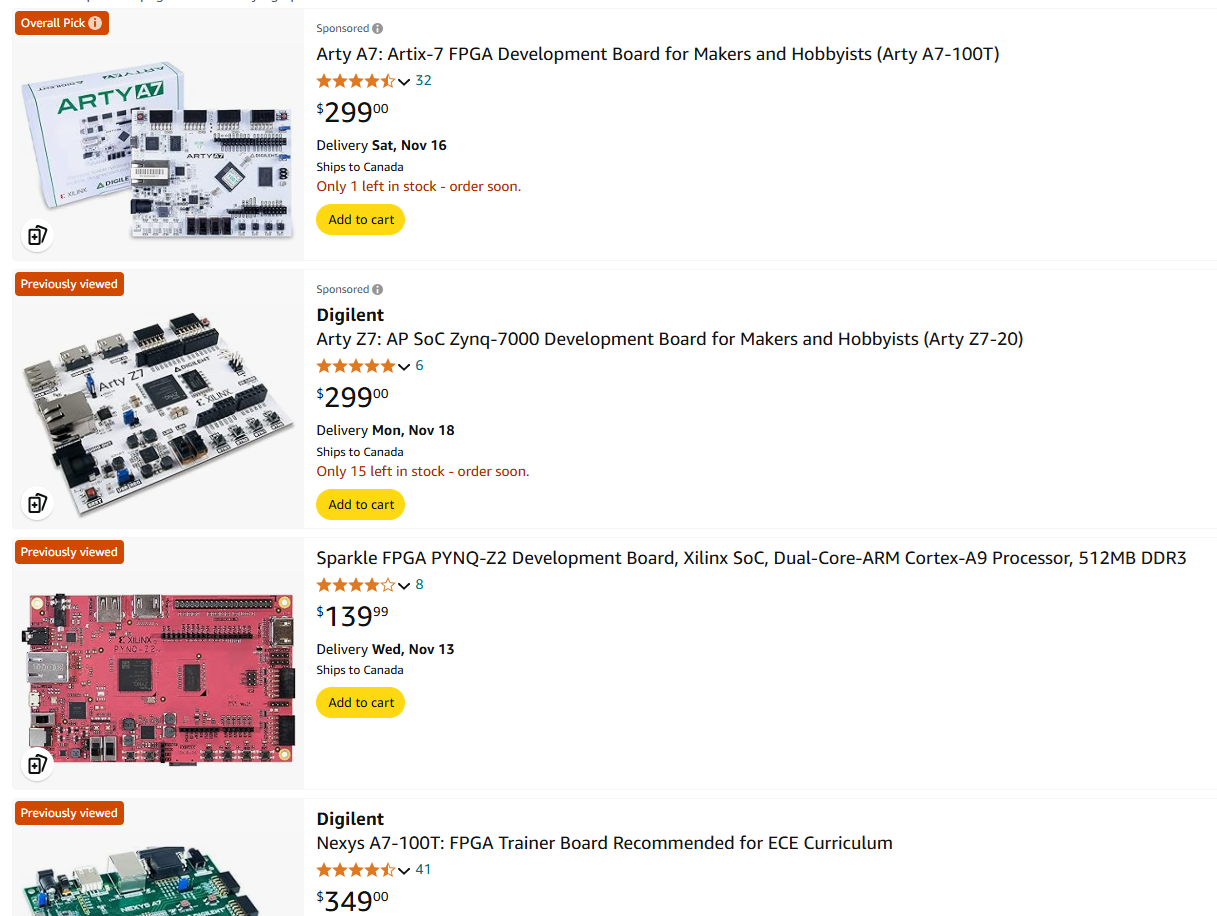Xilinx, now part of AMD following its acquisition in 2022, is a leading company in the field of programmable logic devices, primarily known for its FPGAs (Field-Programmable Gate Arrays) and Adaptive Compute Acceleration Platforms (ACAPs). FPGAs are a type of integrated circuit that can be configured by the user after manufacturing, allowing for highly customizable hardware solutions, especially valuable in sectors like telecommunications, aerospace, defense, and automotive.

1. Detail Xilinx Products
Xilinx, known for its cutting-edge programmable logic devices, provides a variety of FPGA (Field-Programmable Gate Arrays), SoCs (System on Chips), and ACAPs (Adaptive Compute Acceleration Platforms). Here’s a more detailed look at Xilinx’s main product lines and the applications they serve:
1.1. Versal ACAP (Adaptive Compute Acceleration Platform) Series
- Overview: Versal ACAPs are heterogeneous computing platforms that combine FPGAs, CPUs, GPUs, and AI engines, optimized for AI, machine learning, and high-performance computing.
- Variants:
- Versal AI Core: Focuses on AI inference and machine learning applications, with dedicated AI engines.
- Versal Prime: Optimized for general-purpose applications requiring high compute power but less AI acceleration.
- Versal Premium: Targets data center and networking applications, providing high bandwidth and high-speed connectivity.
- Versal AI Edge: Designed for AI acceleration in edge devices, with low power and compact form factors for automotive and industrial IoT applications.
1.2. UltraScale and UltraScale+ FPGA Families
- Overview: UltraScale is Xilinx’s high-performance FPGA family, aimed at applications that require massive computational resources and high-speed interconnects.
- Variants:
- Virtex UltraScale and Virtex UltraScale+: High-end FPGAs built for applications that demand extreme performance, such as aerospace, defense, and data centers.
- Kintex UltraScale and Kintex UltraScale+: Mid-range FPGAs that balance performance and power efficiency for applications in areas like automotive, broadcast, and industrial systems.
- Zynq UltraScale+ MPSoC: Combines FPGA fabric with ARM-based processors, creating SoCs suited for embedded applications where both hardware and software programmability are essential, like advanced driver-assistance systems (ADAS) and industrial IoT.
1.3. Zynq-7000 SoC Family
- Overview: The Zynq-7000 series integrates a dual-core ARM Cortex-A9 processor with FPGA fabric, providing flexibility for a range of embedded applications.
- Applications: Ideal for automotive, industrial automation, smart city infrastructure, and medical imaging, Zynq-7000 SoCs allow developers to handle both control and processing within a single chip.
- Key Features: Provides a complete processing system with integrated peripherals and connectivity, offering a cost-effective solution for mid-range applications that need both CPU and FPGA resources.
1.4. Artix-7 and Spartan-7 FPGA Families
- Overview: Artix-7 and Spartan-7 are part of Xilinx’s 7-series FPGAs, offering cost-effective and low-power options for less computationally intensive applications.
- Artix-7: Optimized for performance in low-power applications. Commonly used in portable and battery-powered applications, it’s ideal for applications like software-defined radio (SDR) and IoT gateways.
- Spartan-7: Entry-level FPGA family aimed at applications requiring low density and low power, used in consumer electronics, display technologies, and basic automotive systems.
1.5. Alveo Data Center Accelerator Cards
- Overview: Alveo cards are FPGA-based accelerator cards designed specifically for data centers to accelerate workloads such as machine learning inference, video transcoding, data analytics, and computational finance.
- Key Models:
- Alveo U200 and U250: High-performance cards for workloads requiring a lot of data movement, such as big data analytics.
- Alveo U50: A low-profile card that offers compute acceleration with lower power requirements, suited for edge servers and AI inference.
- Alveo U280: Optimized for high-bandwidth applications and workloads like video transcoding and genomic processing.
1.6. Software and Development Platforms
- Vivado Design Suite: Xilinx’s primary development environment for hardware design, supporting FPGA synthesis, simulation, IP integration, and timing analysis.
- Vitis Unified Software Platform: Enables software-driven development by allowing high-level programming languages like C, C++, and OpenCL to target Xilinx devices. Vitis accelerates AI model deployment and provides tools for both software developers and hardware engineers.
- Vitis AI: A suite of tools for developing and deploying deep learning applications on Xilinx hardware. It includes model optimization, compilation, and runtime support for FPGAs, optimized for popular AI frameworks like TensorFlow and PyTorch.
2. Applications of Xilinx Products
Xilinx products serve a broad range of industries, including:
- Data Centers: For machine learning, big data analytics, financial modeling, and video processing.
- Automotive: Supporting ADAS, autonomous driving, and in-vehicle infotainment.
- Telecommunications: Used in 5G networks for base stations, network acceleration, and edge computing.
- Industrial IoT: Powering smart factories, robotic automation, and predictive maintenance.
- Aerospace and Defense: Providing secure, high-performance processing in radar, signal intelligence, and avionics.
Xilinx’s adaptability and support for emerging technology have positioned it as a leader in high-performance computing solutions, and it continues to be instrumental in industries looking for highly customizable hardware solutions that deliver both performance and flexibility.
Website URL: https://www.xilinx.com/
